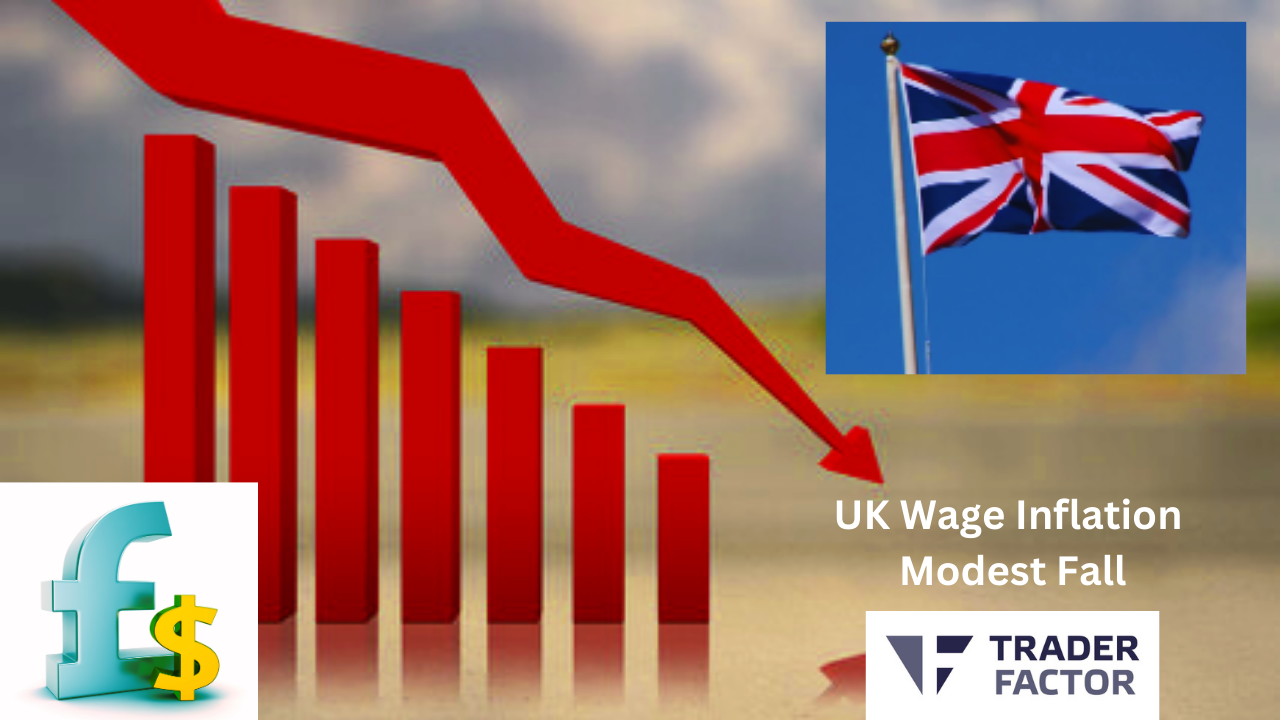GBP/USD Exchange Struggles Below 1.2200
The British Pound (GBP) to US Dollar (USD) exchange rate has seen some fluctuations recently, with the GBP/USD pairing remaining depressed near the 1.2200 mark as of October 17, 2023. This comes in the wake of data from the UK showing a modest easing in wage inflation during August.
GBP/USD Daily Chart

Key Exchange Rate Figures
The key figures for the GBP/USD exchange rate as of October 17, 2023 are:
- Previous Close: 1.2216
- Bid/Ask: 1.2177/1.2178
- Day’s Range: 1.2172 – 1.2219
- Current Exchange Rate: 1.22052
Market Reaction
The GBP/USD is holding lower ground near 1.2200 in early Europe on Tuesday. This comes after the data from the UK showed that wage inflation eased modestly in August. Later in the day, September Retail Sales data will be featured in the US economic docket, which could potentially influence the GBP/USD rate further.
Looking Ahead
With the release of the US September Retail Sales data, there could be additional volatility in the GBP/USD exchange rate. Investors will likely be keeping a close eye on this data release, as well as any other macroeconomic indicators or geopolitical developments that could impact the currency markets.
As always in currency markets, circumstances can change rapidly, and being well-informed is key to making the best possible decisions.
Current Trading Scenario for GBP/JPY
Meanwhile, the GBP/JPY pair has experienced a slight downturn, currently trading around 182.10 during Tuesday’s European session, following its recent surge. This can be attributed to the somewhat subdued UK earning data, which has put some strain on the British Pound (GBP).
GBP/JPY Daily Chart

Impact of UK Earning Data
For the three months leading up to August, the Average Earnings Excluding Bonus remained steady at 7.8%, as anticipated. However, pay levels including bonuses for the same quarter slowed down to 8.1%, falling slightly short of the predicted market consensus of 8.3%.
Anticipation from UK CPI Report
Market participants are closely watching the upcoming UK Consumer Price Index (CPI) report set to be released on Wednesday. The annual figure is expected to show a minor decrease, moving from 6.7% to 6.5%. The Core CPI is also projected to drop slightly to 6% from September’s 6.2%. Despite these expected decreases in the annual figures, the monthly CPI is forecasted to rise from 0.3% to 0.4%.
Potential Interest Rate Hike by BoE
This potential increase in the monthly inflation figures could stoke expectations for another interest rate hike by the Bank of England (BoE). Currently, the odds for an interest rate hike by the BoE hover around a 50% chance of a 25 basis points increase in this cycle.
BoJ’s Stance on Inflation and Monetary Stimulus
The Bank of Japan (BoJ), on the other hand, continues to uphold its belief that inflation is temporary and has no intentions of winding down its extensive monetary stimulus program. This dovish stance, along with a generally positive risk sentiment, could persistently weaken the safe-haven Japanese Yen (JPY), suggesting an upward trend for the GBP/JPY cross.
Possible Intervention from Japanese Authorities
However, the possibility of intervention from Japanese authorities in the foreign exchange market to support their currency adds a layer of downward pressure on the GBP/JPY pair.
UK Employment Overview: Record Pay Growth Amid Slight Dip in Employment Rate (June-August 2023)
The United Kingdom’s employment landscape has seen some interesting shifts in the period from June to August 2023. While the employment rate dipped slightly, pay growth surged to new record highs.
Employment Rate
The employment rate for April to June 2023 was estimated at 75.7%, a marginal drop of 0.1 percentage points from January to March 2023.
Pay Growth
The most noteworthy development during this period has been the significant surge in pay growth. Regular pay growth (excluding bonuses) jumped to a record 7.8% year-on-year in the second quarter of 2023. This is the highest it’s been since comparable data began in 2001.
Furthermore, employees’ average total pay (including bonuses) witnessed an annual growth of 8.1% during June to August 2023. This growth rate was significantly influenced by one-off payments made by the NHS and civil service in June, July, and August 2023.
When adjusted for inflation using the Consumer Prices Index including owner occupiers’ housing costs (CPIH), total pay rose on the year by 1.3% in June to August 2023, and for regular pay rose on the year by 1.1%.
Sector-wise Breakdown
Examining the sector-wise breakdown, the finance and business services sector saw the largest annual regular growth rate at 9.6%, followed by the manufacturing sector at 8.0%.
For the public sector, the annual average regular pay growth was 6.8% in June to August 2023, marking the highest regular annual growth rate since comparable records began in 2001. For the private sector, this figure stood at 8.0%.
Key Figures June to August 2023
| Metric | Value |
|---|---|
| Employment Rate (April – June 2023) | 75.7% |
| Regular Pay Growth (YoY, Q2 2023) | 7.8% |
| Average Total Pay Growth (June – August 2023) | 8.1% |
| Real Total Pay Growth (June – August 2023, adjusted for CPIH inflation) | 1.3% |
| Real Regular Pay Growth (June – August 2023, adjusted for CPIH inflation) | 1.1% |
| Sector with Highest Annual Regular Growth Rate | Finance and Business Services (9.6%) |
These figures paint an interesting picture of the UK’s employment landscape during this period, marked by a slight dip in employment rate accompanied by record-breaking pay growth rates.
Disclaimer:
All information has been prepared by TraderFactor or partners. The information does not contain a record of TraderFactor or partner’s prices or an offer of or solicitation for a transaction in any financial instrument. No representation or warranty is given as to the accuracy or completeness of this information. Any material provided does not have regard to the specific investment objective and financial situation of any person who may read it. Past performance is not a reliable indicator of future performance.
Author
-

Phyllis Wangui is a Financial Analyst and News Editor with qualifications in accounting and economics. She has over 20 years of banking and accounting experience, during which she has gained extensive knowledge of the forex, stock news, stock market, forex analysis, cryptos and foreign exchange industries. Phyllis is an avid commentator on these topics and loves to share her insights with others through financial publications and social media platforms.
View all posts



















